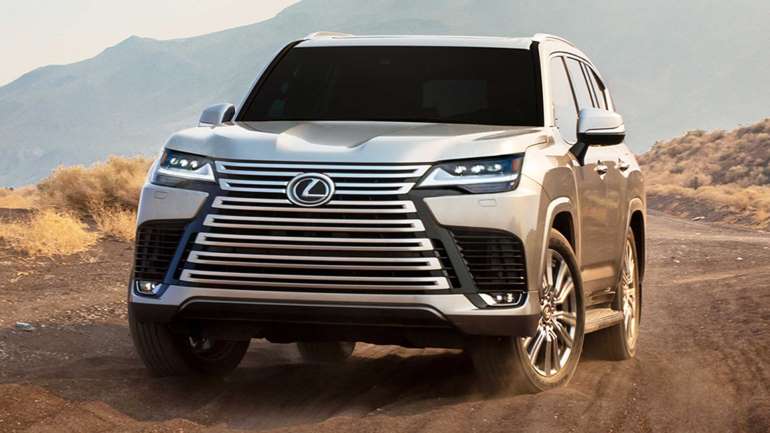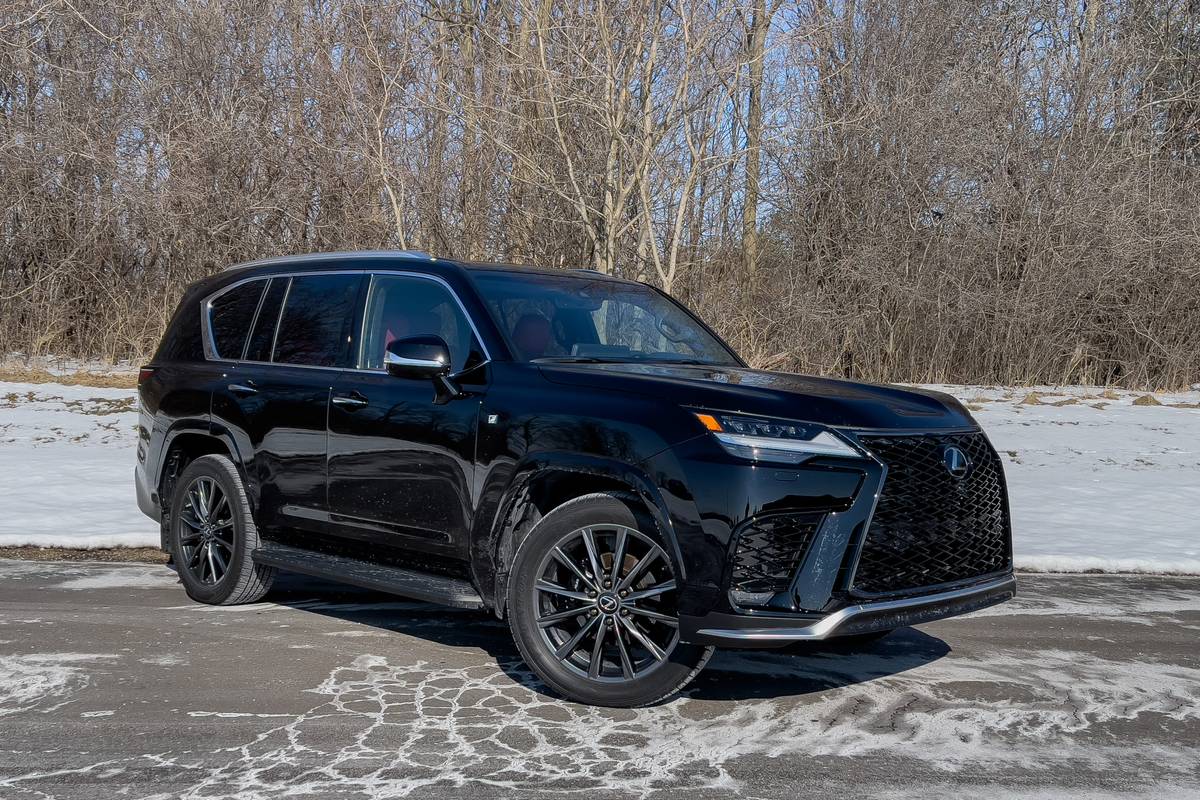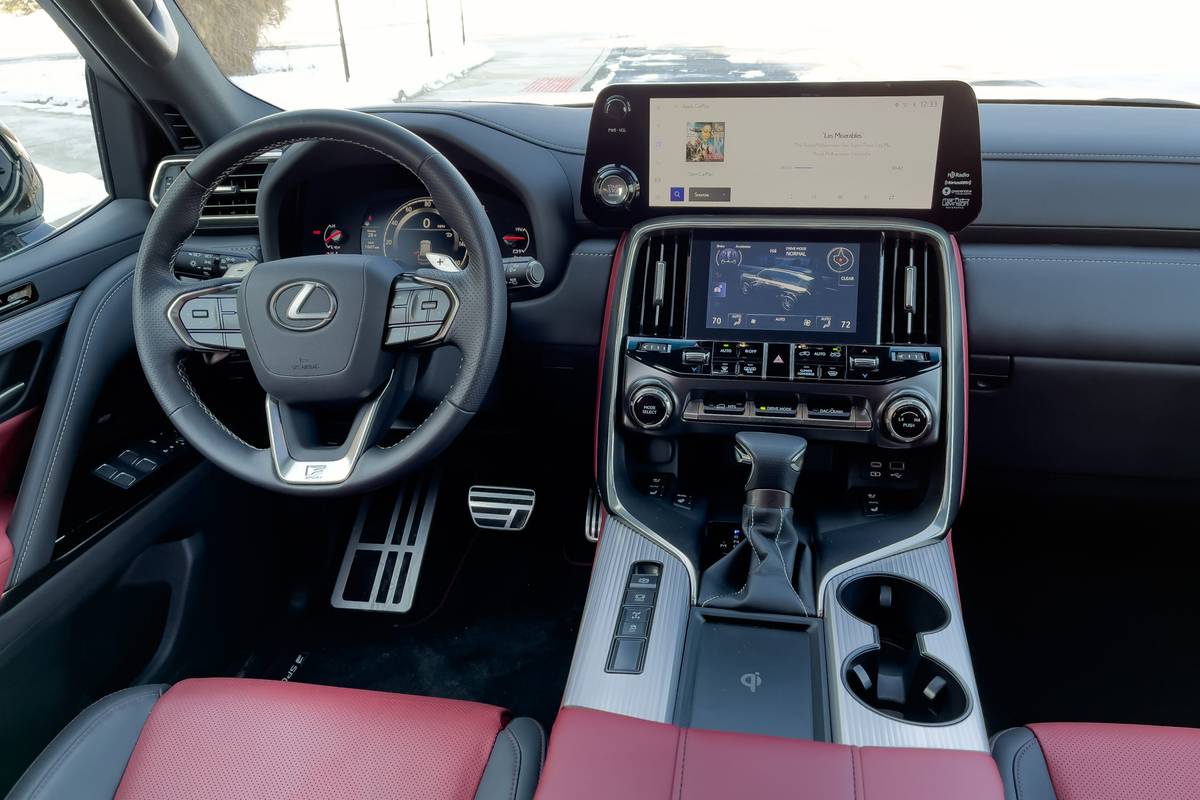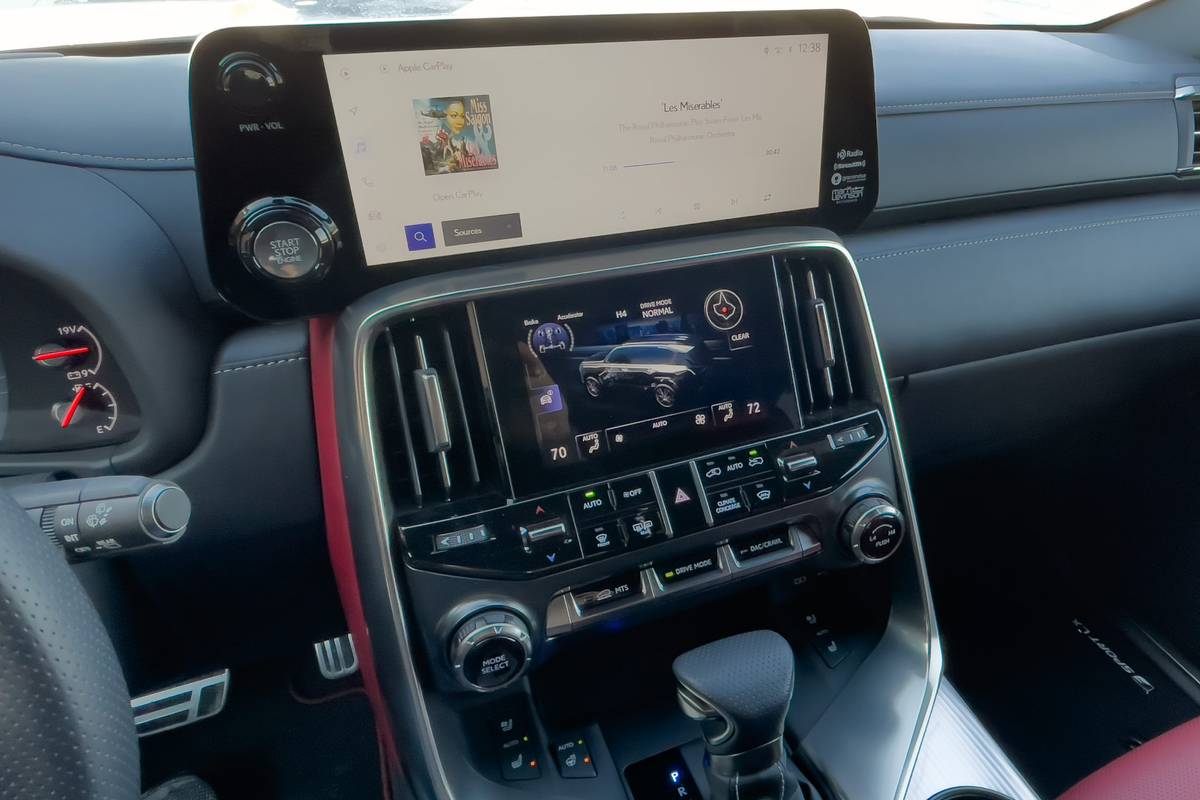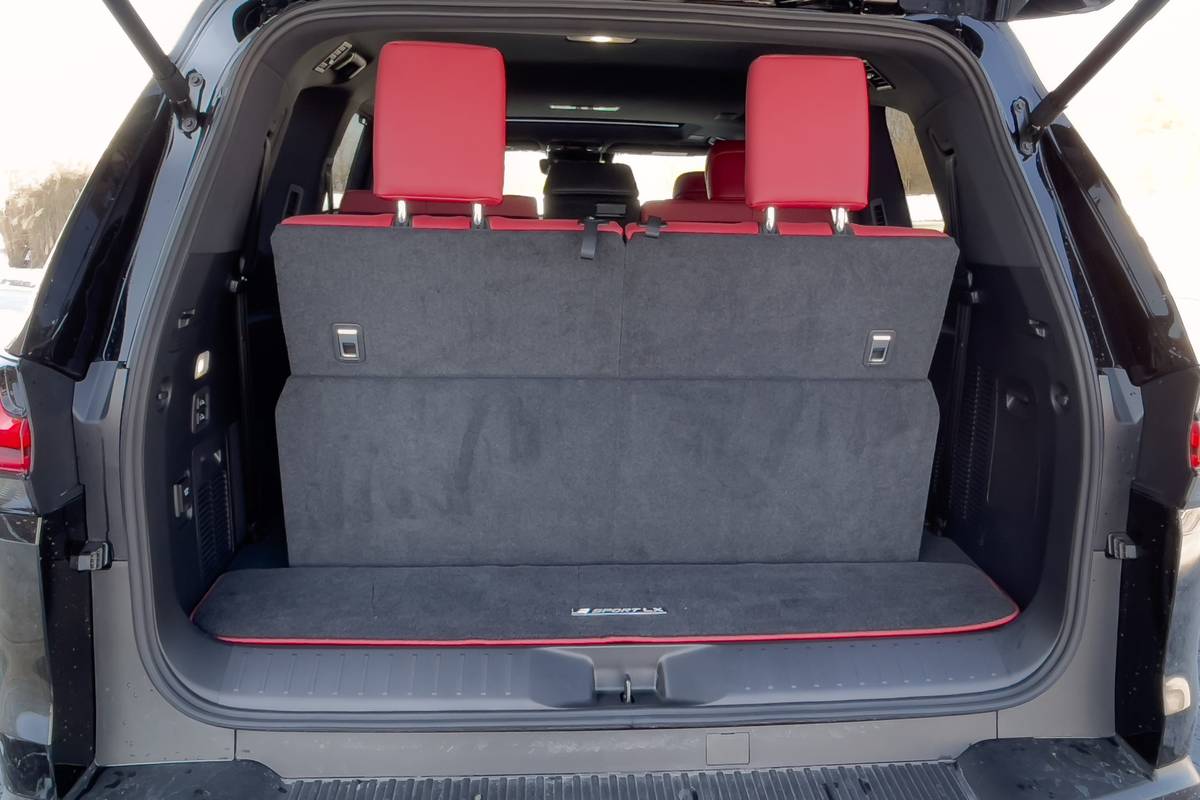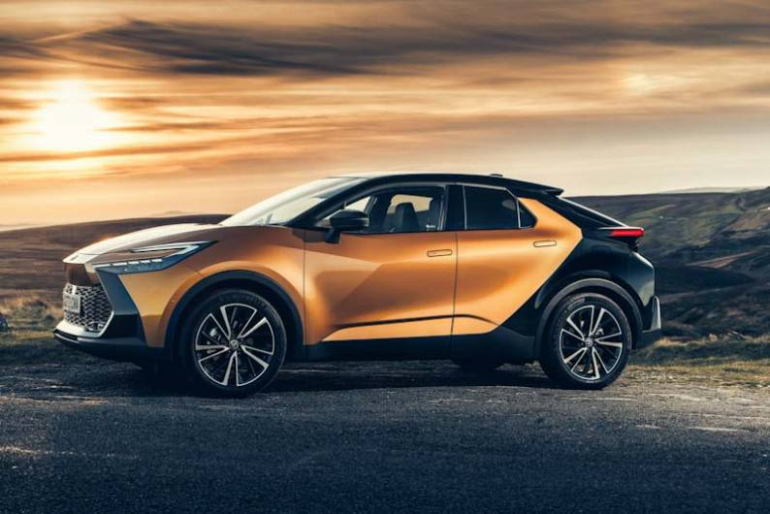Two Screens Are Better Than One?
The controls layout is also a bit busy, with two screens where one might have served better. A 12.3-inch upper screen includes Lexus’ new touchscreen multimedia system, which is a vast improvement over the old joystick-controlled version but still falls short of its competitors’ more sophisticated systems, including BMW’s iDrive and Mercedes’ MBUX. Compared with those systems’ gorgeous graphics, slick menu transitions, and sheer volume of features and information, Lexus’ system seems basic and ordinary, with no more content than you get from your standard Apple CarPlay or Android Auto apps — which are also displayed on that large upper screen. The native navigation system is the same way, but using it now requires a monthly subscription — a daft idea when virtually everyone already has multiple navigation apps on their connected smartphones.
The lower screen is intended to display things like vehicle system status, climate control, four-wheel-drive equipment mode and more. Thankfully, Lexus hasn’t gone the “glass cockpit” route with its interiors (yet), so there are still buttons and toggles for the controls, making it decidedly easier to use than the latest touchscreen and touch-sensitive-control hijinks from Mercedes-Benz. But it seems unnecessary to have two screens in the vehicle, and Lexus put the one with the most used features farthest away from the driver. The whole thing could have been done better.
Comfortable Seating (for Some)
Comfort is decent only in the first row. The seats up there are thronelike, with an upright position that puts you high in the saddle, though the steering wheel feels rather low. This is great for outward visibility, which is top-notch, but it makes you feel a bit like you’re driving a bus.
Overall spatial efficiency in the LX is disappointing; it’s surprisingly small inside for an SUV this size. Second-row comfort has inadequate legroom for such a large vehicle, and the third row is nearly unusable for adults. Granted, the LX is on the smaller end of the full-size SUV spectrum, joined down there by the BMW X7, Infiniti QX80 and Land Rover Range Rover. American-style full-size luxury SUVs like the Cadillac Escalade, Jeep Grand Wagoneer and Lincoln Navigator dwarf the Lexus LX but aren’t as easy to maneuver or park. Still, this doesn’t explain why sitting comfortably in the LX 600’s second row requires front-seat passengers to move their seats forward and up; otherwise, there’s very little leg- or foot room in the second row. Nor does it explain why nobody can be seated in the second row while raising or folding the third row (the second row must be moved forward to accomplish this task).
The Saving Grace: Driving It
What saves the Lexus LX from being completely relegated to the “no thank you” pile is its driving experience. It may not feel as up to snuff in terms of opulence as many of its competitors, but its driving experience matches them. The LX is powered by a twin-turbocharged 3.5-liter V-6 engine (the V-8 is long gone) that pumps out a healthy 409 horsepower and 479 pounds-feet of torque. It’s mated to a super-smooth 10-speed automatic transmission that drives all four wheels through standard full-time four-wheel drive. The F Sport version also features a sport-tuned suspension, which is silly for a vehicle like this — and didn’t make much difference in how the vehicle handled versus the non-F Sport version I drove.
Everything about driving the LX is smooth. Acceleration, transmission shifts and the ride are all smooth and well controlled. In typical Lexus fashion, the idea is to not upset its passengers’ Zen, and the LX most certainly achieves this. It’s still a big, top-heavy, somewhat tippy-feeling SUV — really a Toyota Land Cruiser underneath — but it’s been so well massaged by Lexus’ ride and handling engineers that you’d never connect it with its lesser origins if you didn’t already know. Ride quality is excellent in spite of the F Sport’s big 22-inch wheels (20-inchers are standard), and there’s very little wind noise, just some whoosh from the sideview mirrors. Steering is precise (if rather numb in terms of feedback), and the LX is at home both performing around-town errands and cruising stately down the highway. It also has a significant level of four-wheel-drive equipment aboard thanks to its Land Cruiser roots, including a Multi-Terrain Monitor with under-vehicle cameras; Multi-Terrain Select, which can electronically control various drive systems for off-road driving ; and even a Crawl Control mode for getting unstuck from deep sand and mud. None of this is likely to be used outside the Middle East, but it’s there in case you’re feeling particularly adventurous on your way home from your local Prada boutique.
Priced to Keep It Rare
Top luxury SUVs are all capable of creeping over the $100,000 mark, and the 2022 Lexus LX is no exception. It’s priced to play squarely in the field, with a starting price of $88,245 (including destination fee) for a base LX 600. There are four trim levels above that one with varying degrees of additional standard equipment and different interior color options, culminating in the LX 600 Ultra Luxury trim, which costs $127,345. My test vehicle, an LX600 F Sport Handling, rang in at $105,005.
A Mercedes-Benz GLS450 is nearly $10,000 less expensive to start. It’s also less powerful, though it can be had in a top Maybach trim for well over $160,000 if you add everything. The same is true of the BMW X7, which is even less expensive to start and available in Alpina XB7 guise for nearly $150,000. The bigger American luxury SUVs are a better match price-wise, and they handily outclass the latest LX in interior space, onboard technology and sophistication.
The 2022 Lexus LX 600 is essentially a status symbol for people who absolutely must have one. Drivers looking for a better-packaged, more luxurious and more comfortable SUV might want to consider the bounty of other options.
https://www.cars.com/articles/2022-lexus-lx-600-review-a-flagship-needs-to-be-better-447862/

